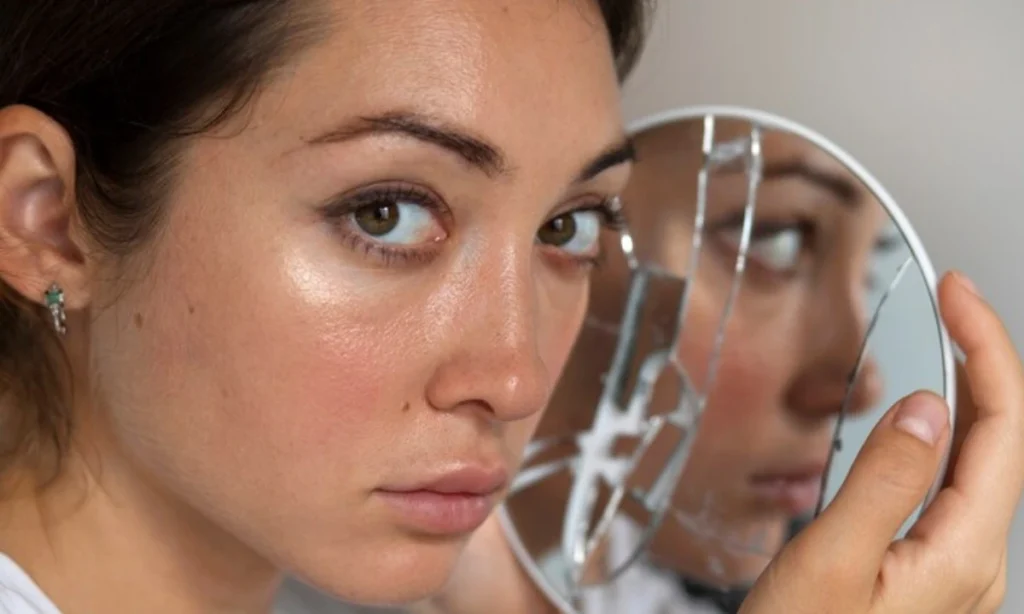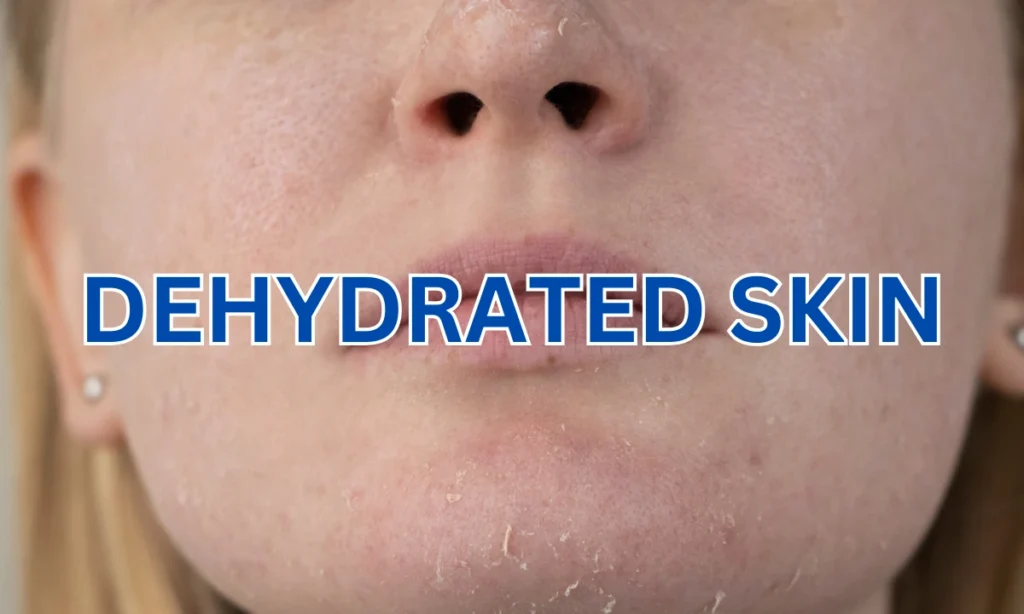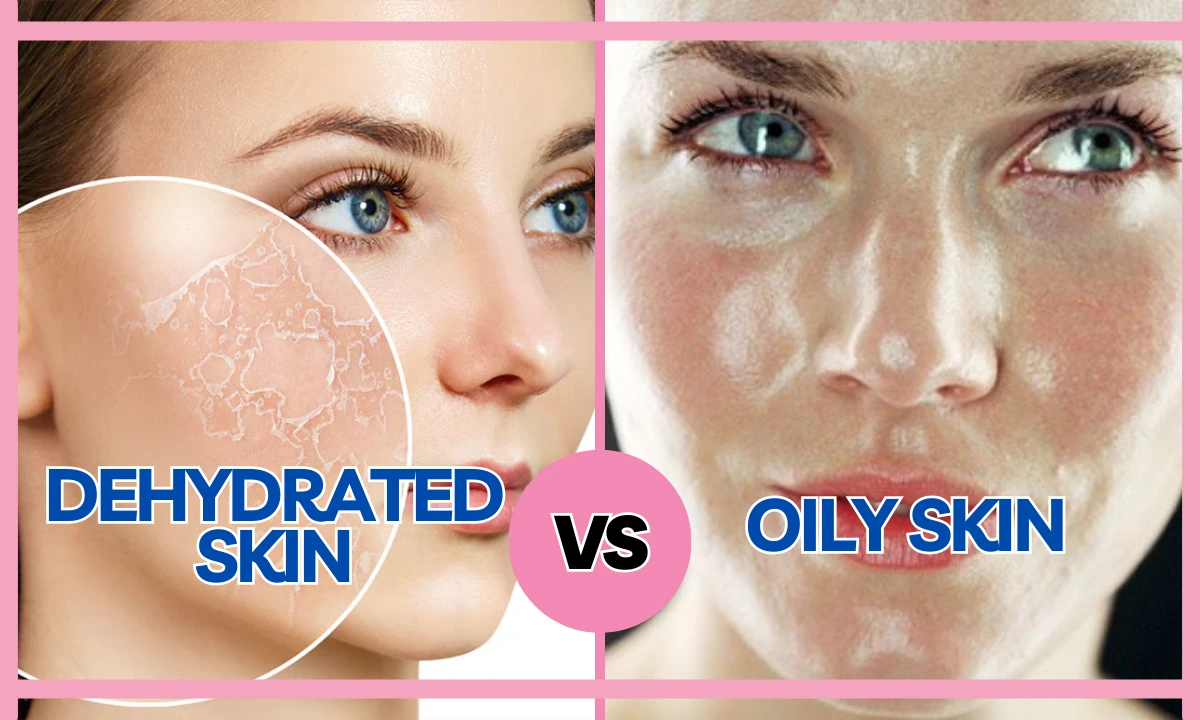“Is oily skin dehydrated? Discover 3 signs you’re missing and learn how to balance hydration for healthier skin.”
Oily Skin

Oily skin is basically a result of the overactivity of sebaceous glands, which results in more production of sebum, leading to shininess and perhaps the formation of acne. Causes of this skin type include genetics, hormonal imbalance, and environmental changes. Oily skin causes congestion and acne since the skin is overproducing sebum, and dead skin cells can block the pores.
Dehydrated Skin
Dehydrated skin means that the skin loses its acceptable amount of water that is supposed to be in its composition. This skin condition can happen to all skin types, including oily skin. Dehydration creates a skin-tight feeling and roughness as well as increasing the amount of oil production from the skin in an effort at replenishing its supply. Symptoms of dry skin include lack of skin tone, wrinkles, and shrinking capacity of the skin.
Is oily skin dehydrated?
It is possible for oily skin to become dehydrated. This situation, which frequently results in a glossy appearance and possible outbreaks, happens when the skin produces too much oil but lacks water. This contradiction can be heightened by elements including harsh skincare products, dehydration, and environmental factors. Dehydrated oily skin might feel tight or harsh, it needs to be hydrated without getting oilier.

Several factors can lead to dehydration in oily skin
Here are several factors that can lead to dehydration in oily skin:
Environmental Conditions: Sun and wind as outdoor elements and air conditioning indoors can remove moisture content from the skin.
Inadequate Hydration: When the body has acute water deficiency, it is referred to as internal dehydration, and this is visible on the skin.
- How to Cancel My Planet Fitness Membership in 2025
- How many calories should I eat to lose weight?
- How many mental health professionals are in the US?
- Skin Care During Winter: 7 Essential Tips to Keep Your Skin Healthy
- How did Elon Musk lose weight so fast? 5 Secrets – You Won’t Believe What He Did!
- How Does Weight Loss Affect Your Face? 6 Unexpected Effects
- Does Baking Soda Kill Dandruff? 5 Proven Methods Explained
- Which Yoga Is Best for Beginners? 6 Easy Poses to Start With
- Are Exercise Bikes Bad for Your Knees? Experts Reveal 3 Insights
- Are Workout Apps Worth It? 5 Unexpected Benefits Revealed
- Can You Repair Hair Follicles? Discover the 5 Best Treatments
Overuse of Harsh Products: Many moisturizers have an underlying stiffening texture that, when applied to the skin, leads to skin dehydration while at the same time, the skin starts to produce more oil.
Due to water deficit, the skin can “cry” and tell the sebaceous glands to produce more oil to lubricate it. This leads most people to a common misconception that the oily areas on their skin are well-nourished and happily suppressed as opposed to what is the truth.
Signs Indicate Your Oily Skin Is Dehydrated
When it comes to recognizing this skin type, it is not very easy, especially if you have not defined dehydrated oily skin. Here are some signs to look for:
- Dull Appearance: The skin may look dull or aged overnight.
- Increased Fine Lines: The typical signs are that you may develop more noticeable lines on the face, such as those around the mouth or eyes, when you’re smiling, for instance.
- Tightness: Though the skin would be oily, the skin will still be tight or uncomfortable.
Managing Oily and Dehydrated Skin
To effectively manage both oily and dehydrated skin, consider the following strategies:
- Drink at least two liters of water each day, however, this varies from person to person. Try to take water internally.
- A solution that removes sebum deposits without removing the skin’s protecting oils.
- Using gel-based moisturizers or creams that don’t include oil but have ingredients like hyaluronic acid to combat dryness is one way to moisturize.
- Exfoliants, toners, and alcohol-based cleansers that are excessively gritty will further dehydrate the skin.
- Avocado, salmon, and other foods high in vital fatty acids, as well as foods high in antioxidants, should be major components of your diet.
Conclusion
So in essence, due to the many factors that influence skin including, temperature, humidity, and hydration, oily skin can be dehydrated. This paper discusses this relationship to help those involved in skincare management to answer this essential question. The overproduction of sebum can be fixed through a regular skincare routine paired with moisturizers. People with oily-dehydrated skin can gain healthier skin simply by balancing oiliness and moisture. It will also be very useful for you to regularly evaluate your skincare products and routines for maximum moisture but minimal oily output.
What causes excessive oily skin?
Seborrhea can be primary, wherein there are no specific reasons for oily skin, or secondary, which physical or hormonal changes, medicine, stress, improper diet, and any climatic characteristics. Overwashing also causes the skin to produce more oil due to a lack of facial moisture. This is where knowing these triggers comes in handy in the management of them.
What does dehydrated skin look like?
Dry skin might look lackluster and feel dry and coarse, with fine lines or wrinkles more easily visible when expressing themselves with their face. It might sometimes be a little constrictive, or feel like it is irritating the skin and may cause dryness even to the skin of people who have oily skin.
Why is my face oily but my body is dry?
This difference is often because sebaceous glands vary in terms of activity level in different regions of the body. The face especially the T-Zone has high levels of oil which in this case produces excess sebum while other parts of the body do not have enough moisture to sustain the skin.

